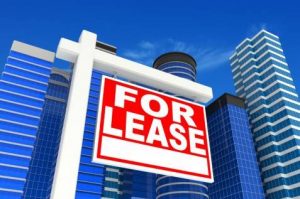Preparing a commercial space for the market
Understanding the Value an Architect can bring to your property
January 8, 2020What You Should Know About Repaving The Asphalt This Spring
May 1, 2020Leasing commercial spaces that become vacant is a major concern for every Property Owner. No matter how hot the real estate market may be in your area, and no matter the size or age of the space that’s coming up for lease, if you know how to properly get your space market-ready, you can reduce the length of time it stays on the market and even earn higher rents from new tenants. Preparing a commercial space for the market is an art, and something that can add incredible value to the owner.

Preparing a commercial space allows an owner to maximize the ability and value of a new lease
Here are some best practices to help you get your properties into the best possible shape before listing them.
Keep an Eye on Your Upcoming Vacancies
“Many commercial landlords simply aren’t proactive when it comes to the end of their existing leases,” says Elizabeth Whitton of Toronto’s Armadale Property Management. “When spaces become available, they can find themselves with a lot of work to do to get them market-ready.”
Make note of the properties that will soon be empty and schedule times to go see them before your tenants move out. See if the common areas are in good shape. How is the paint holding up? Are there divots and dings in the walls and furniture? How is the property’s curb appeal? Does it look clean and neat to passersby? Write a list of different renovations that you need to do once the tenants are gone.
“When assessing large spaces, make sure people can get in easily and that commercial real estate agents can have access,” says Whitton. “Take a look at the lobby, see what you can do to make it as attractive as possible to visitors. Make sure the parking lot is clean and in good driving condition. You should be doing that anyway, but when you have to market space, you want people to feel that they can move in tomorrow.”
Smaller Spaces as Model Suites
Whitton notes that landlords often forget that the space has to show very well. “It’s very similar to how you would ready a house,” she says. “You have to make it look attractive enough to prospective tenants that they’ll want to move in as soon as possible.”
Any space that’s 4,000 square feet and under is considered small, such as offices within larger buildings and small retail stores. One very successful method that you can take is to turn your small space into a model suite, adding in, for example, glass doors, skylights, and new lighting fixtures. These elements can allow you to list for a higher rate.
Done properly, the small space can become fairly generic, meaning you can flip it over and over again to a variety of tenants. “I’ve had one space that I’ve had on the market in an office building where we invested three glass offices and a nice little kitchen,” says Whitton. “We’ve done little with that space over the last ten years, and it’s just constantly getting the high rates, with no further improvements but a paint job”.
For Larger Spaces, Less Is More
For larger spaces (4,000 square feet and up), it’s better to do fewer renovations, since it can get very expensive, so be sure to focus your attention and resources into a smaller number of changes.
Consider demolishing walls: depending on when the space was first built, they may be redundant or restrictive, especially with current trends for open-concept spaces.
Replacing or adding in a new kitchenette greatly enhances the market value of large office spaces. Blinds should be standardized within the same building and not only in working shape, but they should also help sell the view outside the space’s location.
Whether it’s a small or large space, make sure your outgoing tenants are observing good housekeeping practices, especially as the expiry date approaches. Prime the walls white and make sure that the ceilings are clean. (In fact, ceiling tiles are base-building: they must be symmetrical and in good condition.)
Finally, don’t sweat the carpet. Whitton notes that a common (and costly) misconception that many landlords have when renovating large spaces is replacing the carpet. “I get landlords saying ‘what if the tenant doesn’t like the carpet?'”, she says. “In my 30 years in this business, I’ve never had a tenant tell me they wanted to change the carpet. If the place is newly renovated, if it’s well appointed, with a new kitchenette, new tenants will not only ignore the condition of the carpet, but they’ll pay a premium and it’ll turn over a lot faster.”
Market Readiness Leads to Higher Market Value
When done right, even a little bit of market preparation can lead to increased profits in both the short and long term, attracting higher paying tenants and longer lease terms.
“I had a building that was rated at $10/square foot,” says Whitton. “By the time we built in a little office that was ready for someone to move into, we got $16/square foot. Market preparation increases value, even if it’s a bit of an investment at first. That initial money out of your pocket will come back to you tenfold if you do everything properly.”
Read about other ways you can add value to your commercial property.
